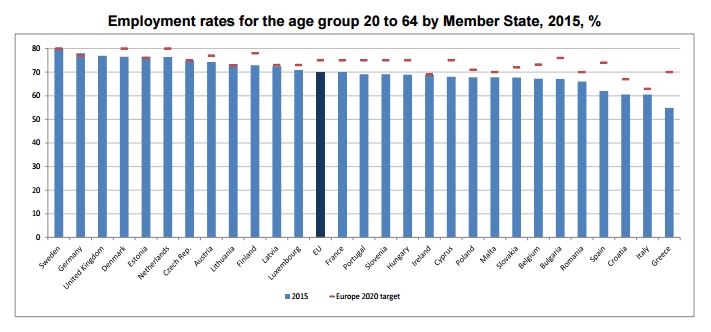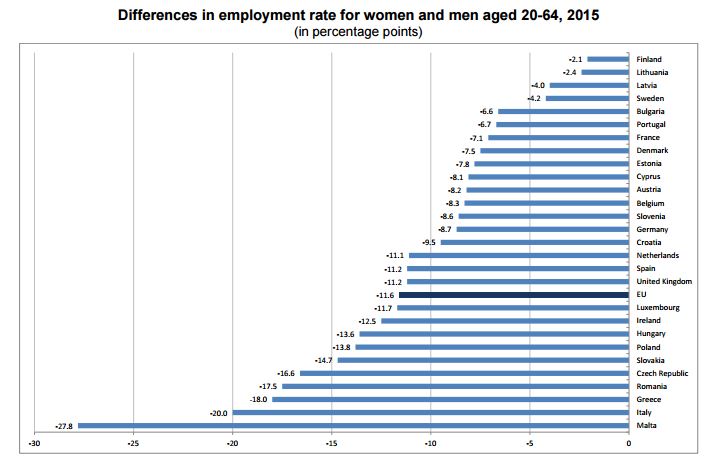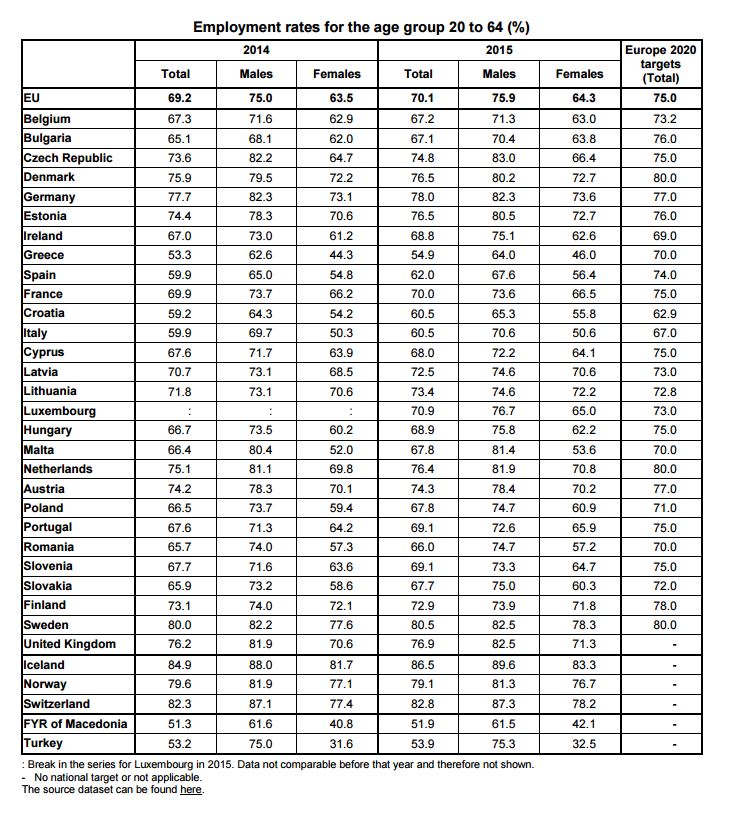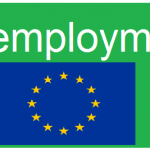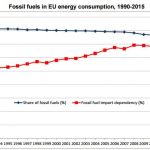Eurostat released employment rate of people aged 20 to 64 in the EU

Employment rate of people aged 20 to 64 in the EU above 70% in 2015
New peaks for women and those aged 55-64
In 2015, the employment rate of the population aged 20 to 64 in the European Union (EU) stood at 70.1%, up compared with 2014 (69.2%) although still remaining slightly below its 2008 peak (70.3%). A similar pattern can be observed for men: their employment rate hit 75.9% in 2015, an increase compared with 2014 (75.0%) but still below its 2008 level (77.8%). As for women, their employment rate has continuously risen since 2010 to reach 64.3% in 2015, above previous peaks of 63.5% in 2014 and 62.8% in 2008. The Europe 2020 strategy target is to reach a total employment rate for people aged 20 to 64 of at least 75% in the EU by 2020. This objective has been translated into national targets in order to reflect the situation and possibilities of each Member State to contribute to the common goal.
The employment rate of persons aged 55 to 64 in the EU has grown steadily over the last years, from 38.4% in 2002 to 53.3% in 2015. The greater participation of older workers is also one of the objectives of the Europe 2020 strategy on employment.
This information comes from an article issued by Eurostat, the statistical office of the European Union, based on the 2015 results of the European Labour Force Survey. This survey collects data on employment and unemployment, as well as on a large range of other variables related to the labour market, of which only a small selection is shown in this News Release.
Germany, Estonia, Lithuania and Sweden already achieved their Europe 2020 employment target
Compared with 2014, the employment rate for those aged 20 to 64 increased in 2015 in almost every Member State, and most strongly in Hungary, Estonia, Spain, Bulgaria, Latvia, Ireland and Slovakia. Employment rates above 75% were recorded in Sweden (80.5%), Germany (78.0%), the United Kingdom (76.9%), Denmark and Estonia (both 76.5%) and the Netherlands (76.4%). Among these Member States, Germany, Estonia and Sweden have already met or exceeded their 2020 national targets for this indicator in 2015, as has Lithuania. Moreover, the Czech Republic, Ireland and Latvia are 0.5 pp or less from their respective targets.
On the other hand, the lowest employment rate was observed in Greece (54.9%), followed by Croatia and Italy (both 60.5%) as well as Spain (62.0%).
Narrowest gender employment gap in Finland and Lithuania, widest in Malta
Employment rates of men and women continued to vary considerably in many Member States in 2015. The difference between the employment rate of women and that of men aged 20-64 was lowest in Finland (71.8% for women vs. 73.9% for men, or -2.1 percentage points), Lithuania (-2.4 pp), Latvia (-4.0 pp) and Sweden (-4.2 pp). At the opposite end of the scale, the largest difference between the employment rate of women and that of men was observed in Malta (53.6% for women vs. 81.4% for men, or -27.8 pp). Big gaps were also recorded in Italy (-20.0 pp), Greece (-18.0 pp), Romania (-17.5 pp) and the Czech Republic (-16.6 pp). At EU level, the difference between the employment rate of women aged 20-64 (64.3%) and that of men aged 20-64 (75.9%) was -11.6 pp in 2015, compared with -17.3 pp in 2002.
Source: Eurostat










